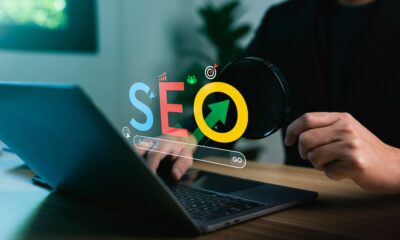MARKETING
Turn a Cold Lead To a Hot Lead with Paid Traffic

There are three primary temperatures of traffic. It’s important to think about each type as you build your digital marketing strategy. If you’ve heard Ryan Deiss talk about how dating and marketing are similar, you’ll get these right away. If not…keep reading! You’ll see how easy it is to turn cold leads into hot leads.
What Is Cold Traffic?
Someone who knows nothing about your product is a cold lead. Honestly, a cold lead might not even recognize they have a problem. If they are aware of a problem, they might not know a solution exists.
- Cold traffic isn’t ready to engage.
- Cold traffic isn’t ready to buy.
- Cold traffic might not even want to hear from you.
You might be thinking, “why waste my time and ad spend trying to win over someone who doesn’t even want to hear from me?” Because…they actually DO want to hear from you, they just don’t know it yet.
Marketing Is Relationship Building
I feel strongly that digital marketing is relationship building. Think about any new relationship. They all start out cold with what Ryan Deiss calls a glance. You see someone from across the room that looks interesting. They glance back. It’s just a moment.
What’s the next step? Go and introduce yourself. That’s what paid traffic does. It introduces your product to the prospect.
Know Your Target Audience
Before marketing to anyone, you should create a buyer persona. At Digital Marketer, we call it the Customer Avatar. Completing a Customer Avatar Canvas helps you know the prospect to a point where you know:
- What their goals are.
- What their pain points are.
- Their hobbies and interests.
- Where they hang out.
- Their dreams and plans.
- What keeps them up at night.
If your marketing speaks to those issues, you’ll start to turn that traffic into warm traffic.
What Is Warm Traffic?

At the warm traffic stage, prospects don’t need to know about you, your product, or your brand to be considered warm leads or warm traffic. They do, however, need to be aware that they have a problem.
Warm traffic is any potential customer who has identified an issue and they’re interested in having that issue addressed in some way.
Examples of warm traffic include:
- The minivan mom who realizes, “I need an oil change.”
- The newly wedded couple who decides, “We’re interested in buying a new house.”
- The overworked attorney who says, “I want to go to Tahiti.”
In other words, warm traffic is a potential customer who has identified a need.
What Is Hot Traffic?
Hot leads are the folks that are ready to go. You’ve “turned a glance into a stare,” as Ryan would say. You’ve introduced yourself and gotten the number. Now you’re ready for the first date!
- Hot traffic wants to engage.
- Hot traffic wants to subscribe.
- Hot traffic wants to convert.
- Hot traffic wants to buy!
As you might expect, this is the most valuable traffic. It’s also the most expensive.
How To Turn A Cold Lead Into A Hot Lead With Paid Traffic
Quality leads don’t flow into a business on accident. The lead generation strategy you put into place has to gradually warm them up. At the cold lead stage, your job as a marketer is to put the message in front of them. The Facebook ad, Google ads, or whatever, has to be something that’s attractive to them and captures their attention.
This all goes back to the Customer Avatar or buyer persona. You’ve got to know your target audience before you can craft a high-converting offer.
What Is A Sales Funnel?
[insert sales funnel graphic]The sales funnel is a concept that has been beaten to death. But it’s prerequisite to understand because it is a natural sequence. It is the way people think before they make a purchase.
You have to understand the sales funnel before you can get good at lead generation.
Why? For every single purchase you’ve ever made in your entire life, from buying a stick of gum to purchasing a house, you have unconsciously gone through this funnel.
Top Of The Sales Funnel: Awareness
At the very top of the sales funnel is awareness. Remember the cold lead who was blissfully unaware of the problem you provide a solution to? Well, they’ve just realized they have that problem. Now, the potential lead is aware and enters your sales funnel.
Example: “Ouch, my back hurts.”
Your solution might be spinal surgery, chiropractic care, or a pain relief cream. The warm lead now has a vague awareness of your participation in the solution.
Sometimes awareness starts inbound, like when your prospect goes to the search engines and asks a question.
In many cases, awareness can actually be catalyzed through outbound advertising. You could run Facebook ads that speak to back pain and ways to relieve it. (Due to Facebook compliance issues, be very careful what claims you make!)
You don’t have to wait around for people to become aware. You can create awareness with paid traffic. Once they are in the awareness stage, it’s your job to start driving them down to interest.
The Interest Stage
At the interest stage we use content videos, blogs, downloadable PDFs, etc. Whatever you think is going to engage your prospect and start getting the wheels turning.
- You want to establish authority
- You want to be the thought leader
- You want to be the trusted resource.
To do that, you should provide top quality content. Use the acronym “E-A-T” when you consider what kind of content to produce. EAT stands for Expertise, Authority, and Trust.
The content you create for your target audience will not only move them into the interest stage, but move them to the next level, which is consideration.
Warm Leads and Consideration
You’re one step closer to earning a qualified lead! At the consideration stage the warm lead is now willing to look at solutions. But that doesn’t mean they’re willing to look at your solution.
Consider all the options available. Referring back to our example, the potential customer has a whole spectrum of options. On one extreme is back surgery. On the other is a pain relief cream.
If you’re the authority and they trust you, they’ll trust you to begin prescribing what the solution could be. But please remember that prescription without diagnosis is malpractice.
What you should do in your funnels and with your content, is give people the opportunity to engage with your solution. Let them know that you understand what they’re going through. Let them know that you’ve overcome the issues they’re facing.
In other words, don’t put offers in front of them too soon.
Putting an offer at the consideration stage is too early. It’s like asking for marriage on the first date.
From the consideration stage, prospects move to intent.
The Intent Stage
This is the stage in the sales funnel when your potential lead decides to take action. As an example, someone knows they’re going to buy a car. At this stage, they need to figure out which car to buy.
The shift from intent to evaluation, the next stage in the sales funnel, is fairly fast. Why? I think people lack patience. We’re all used to immediate gratification. So moving people from intent to evaluation is generally easy.
From Evaluation to Purchase
Although the time between intent and evaluation is short, the shift requires tactical content. At this stage, your content marketing should be focused on creating content such as
- Features lists
- Pricing calculators
- Comparison charts
- How-to videos
The content you create should help the prospect make the most logical decision: to purchase your product.
Why Paid Advertising Trumps SEO
I hate to beat up on SEO. But the truth is with organic traffic, you’re at the mercy of the search engine. Who is searching for your product? What are they searching for? Where will the search engine place your product?
Another disadvantage of SEO is that it’s generally all top of the funnel.
The benefit of paid traffic is that you get to speak to people at every single stage of the funnel using paid ads. This isn’t true for other advertising mechanisms.
With paid traffic, you get to place your ads wherever you want.
Realize that the further down the funnel you go, the more expensive traffic becomes. That makes sense, right? At the bottom of the funnel people are ready to buy. In many cases, the hot lead has their wallet out, their credit card in hand, and they’re ready to click that “Buy Now” button.
“The Bottom Up Funnel”
My business partner, John Moran, coined the term “the bottom up funnel.” What we recommend is for marketers to start at the bottom of the funnel.
Think about all the steps in the funnel. It can be tedious to layout a content marketing strategy to meet all the needs of your potential customers. When you implement your marketing efforts at the top of the funnel, you spend a lot of time, effort, energy, and money to move cold leads down the sales funnel.
The push from awareness to interest to consideration can take months! From consideration to intent can take event longer. Think about buying a car. Once you decide which car you want to buy, you may have to research interest rates on loans, or you may want to save money for the down payment.
If you invest all your time and effort to drive people from the top of the funnel downward, they may get to the bottom of the funnel and you suddenly realize you marketed to the wrong buyer persona. They’re not the right fit! Or your price isn’t right. Or maybe the offer isn’t attractive enough.
Driving traffic to the top of the funnel first means you’re always learning the most important lesson last.
We want you to learn the most important lesson first.
It will be expensive. You’ll pay more in ad spend to learn that lesson. But when you learn the most important lesson first, you can slowly travel up the funnel. Once the sale has been made, you know what to say, what to charge, how to engage people and convert them into quality leads.
The best recommendation I can give you is to build your funnel from the bottom up. Start with the intent stage and work your way up. With all the benefits of paid traffic like speed, advanced analytics, laser-targeting, and optimization, your paid ad campaigns will be much more effective if you do.
Want to become a traffic master? Click here to find out how!
NOTE: This content came directory from DigitalMarketer’s Paid Traffic Mastery Certification.
Source link

















You must be logged in to post a comment Login